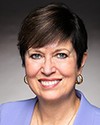As to resources, we need to look at where women are coming from and be able to support them in their journey. Some of our programs adopt a pathway approach. This means giving people, particularly if they're coming from jobs they've done in their own country, the opportunity to move forward and providing them with adequate support. Being able to do this is really important.
We have a continuum of programs. It's hard to speak to one specific thing, but we favour providing a continuum and using a case management approach. We try to learn about the individual, who they are, where they are coming from. We do a strength-based analysis of what they need, what they see as their potential, and how we can provide them with pathways and choices that will help them move forward.
To be effective, the program requires flexibility in the resources from our funding partners. If we try to do one specific thing, it's never going to address the reality of our clients and allow us to fit that reality to our programs. One of the programs we're working on right now is career explorations, which involves a youth group between the ages of 18 and probably 25. We have a number of young women in that program. The program includes the language training they may need, and helps them figure out the best pathways. Do I need to go to community college, university? Do I want it? Do I want to pursue a job in this area? This is really about supporting them and helping them move forward.
It can take more time to be able to do that, but for us as an agency it is critical for this program to have that flexibility, together with the support of the federal government. We need to be very responsive in applying our case management approach. We want to provide an authentic response to who this individual is and how she can integrate so as to be able to offer her strengths to the community.



